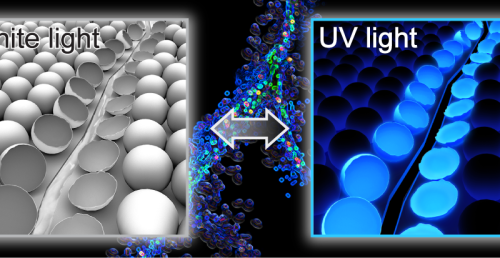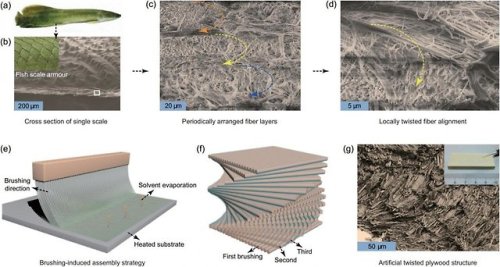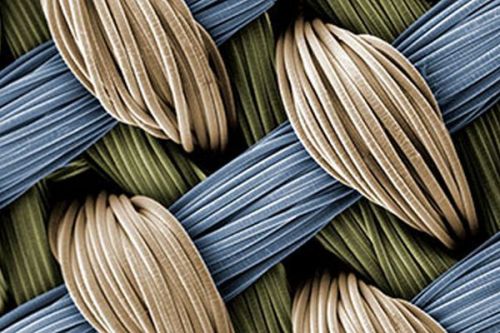#composites
New method to identify microscopic failure (Update)
If you’ve never had the plumber to your house, you’ve been lucky. Pipes can burst due to a catastrophic event, like subzero temperatures, or time and use can take a toll, wearing away at the materials with small dings and dents that aren’t evident until it’s too late.
But what if there were a way to identify those small, often microscopic failures before you had to call for help?
The Autonomous Materials Systems (AMS) Group at the Beckman Institute for Advanced Science and Technology has recently found a new way to identify microscopic damage in polymers and composite materials before total failure occurs.
“Autonomous indication of small cracks has exciting potential to make structures safer and more reliable by giving time to intervene and repair or replace the damaged region prior to catastrophic failure,” said Nancy Sottos, professor of materials science and engineering, and one of the authors of “A Robust Damage-Reporting Strategy for Polymeric Materials Enabled by Aggression-Induced Emission,” recently published in ACS Central Science. The paper is part of a research project selected as a finalist for the Institution of Chemical Engineers (IChemE) Global Awards 2016.
Post link
Hybrid nanomaterials bristle with potential
By combining multiple nanomaterials into a single structure, scientists can create hybrid materials that incorporate the best properties of each component and outperform any single substance. A controlled method for making triple-layered hollow nanostructures has now been developed at KAUST. The hybrid structures consist of a conductive organic core sandwiched between layers of electrocatalytically active metals: their potential uses range from better battery electrodes to renewable fuel production.
Although several methods exist to create two-layer materials, making three-layered structures has proven much more difficult, says Peng Wang from the Water Desalination and Reuse Center who co-led the current research with Professor Yu Han, member of the Advanced Membranes and Porous Materials Center at KAUST. The researchers developed a new, dual-template approach, explains Sifei Zhuo, a postdoctoral member of Wang’s team.
The researchers grew their hybrid nanomaterial directly on carbon paper—a mat of electrically conductive carbon fibers. They first produced a bristling forest of nickel cobalt hydroxyl carbonate (NiCoHC) nanowires onto the surface of each carbon fiber (image 1). Each tiny inorganic bristle was coated with an organic layer called hydrogen substituted graphdiyne (HsGDY) (image 2).
Post link
Biomimetic micro/nanoscale fiber reinforced composites
Over hundreds of millions of years of evolution, nature has produced a myriad of biological materials that serve either as skeletons or as defensive or offensive weapons. Although these natural structural materials are derived from relatively sterile natural components, such as fragile minerals and ductile biopolymers, they often exhibit extraordinary mechanical properties due to their highly ordered hierarchical structures and sophisticated interfacial design. Therefore, they are always a research subject for scientists aiming to create advanced artificial structural materials.
Through microstructural observation, researchers have determined that many biological materials, including fish scales, crab claws and bone, all have a characteristic “twisted plywood” structure that consists of a highly ordered arrangement of micro/nanoscale fiber lamellas. They are structurally sophisticated natural fiber-reinforced composites and often exhibit excellent damage tolerance that is desirable for engineering structural materials, but difficult to obtain. Therefore, researchers are seeking to mimic this kind of natural hierarchical structure and interfacial design by using artificial synthetic and abundant one-dimensional micro/nanoscale fibers as building blocks. In this way, they hope to produce high-performance artificial structural materials superior to existing materials. However, due to the lack of micro/nanoscale assembly technology, especially the lack of means to efficiently integrate one-dimensional micro/nanoscale structural units into macroscopic bulk form, mimicking natural fiber-reinforced composites has always been a major challenge.
Post link
FromNSF Science360 Picture Of The Day; June 2, 2015:
3-D Fabric Scaffold
These tiny interwoven fibers make up the 3-D fabric “scaffold” into which a strong, pliable hydrogel is integrated and infiltrated with stem cells, forming a framework for growingcartilage. The resulting composite material is tough, flexible and formable and has excellent frictional properties. It mimics both the strength and suppleness of native cartilage.
Visit Website | Image credit: Frank Moutos, Orthopaedic Research Laboratories, Duke University, and Farshid Guilak, Professor of Orthopaedic Surgery and Mechanical Engineering and Materials Science, Duke University
Post link




